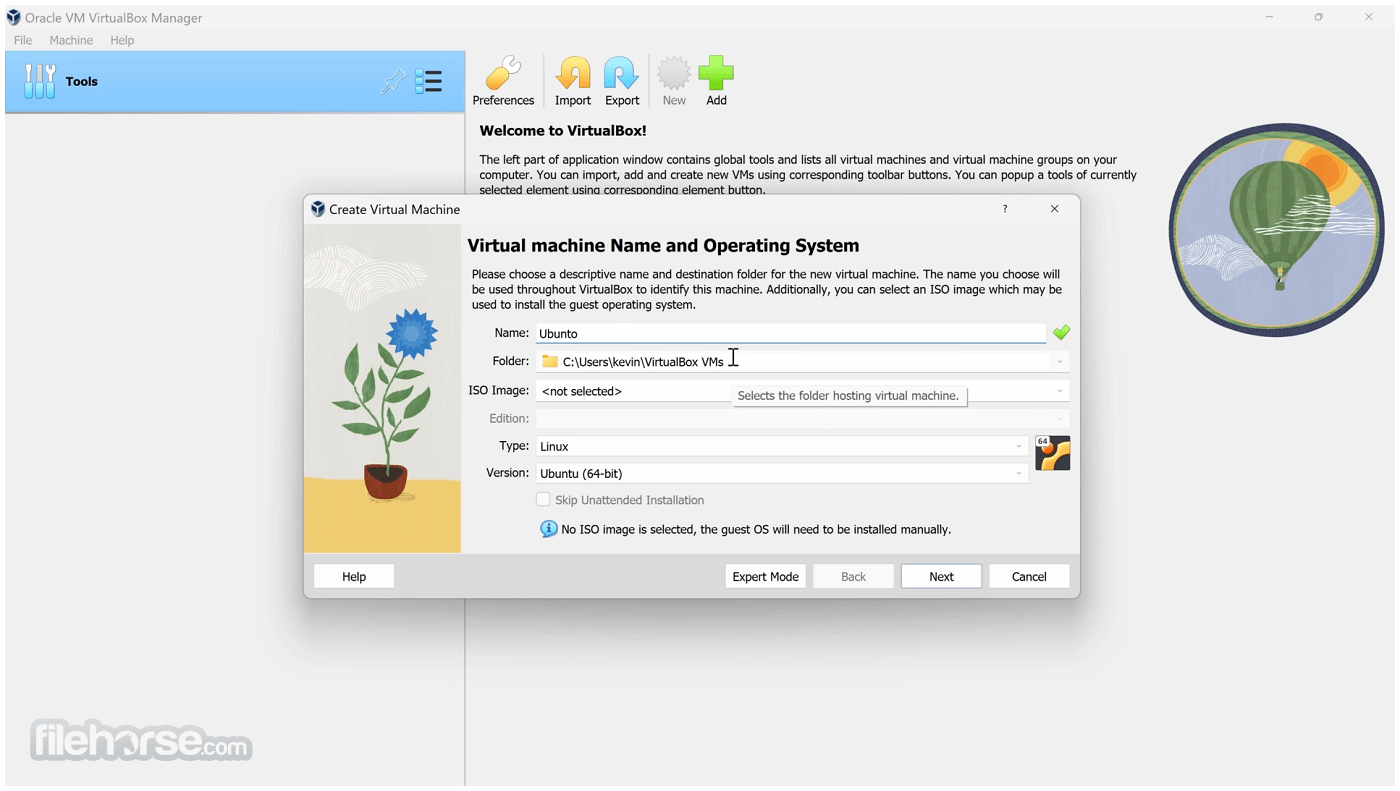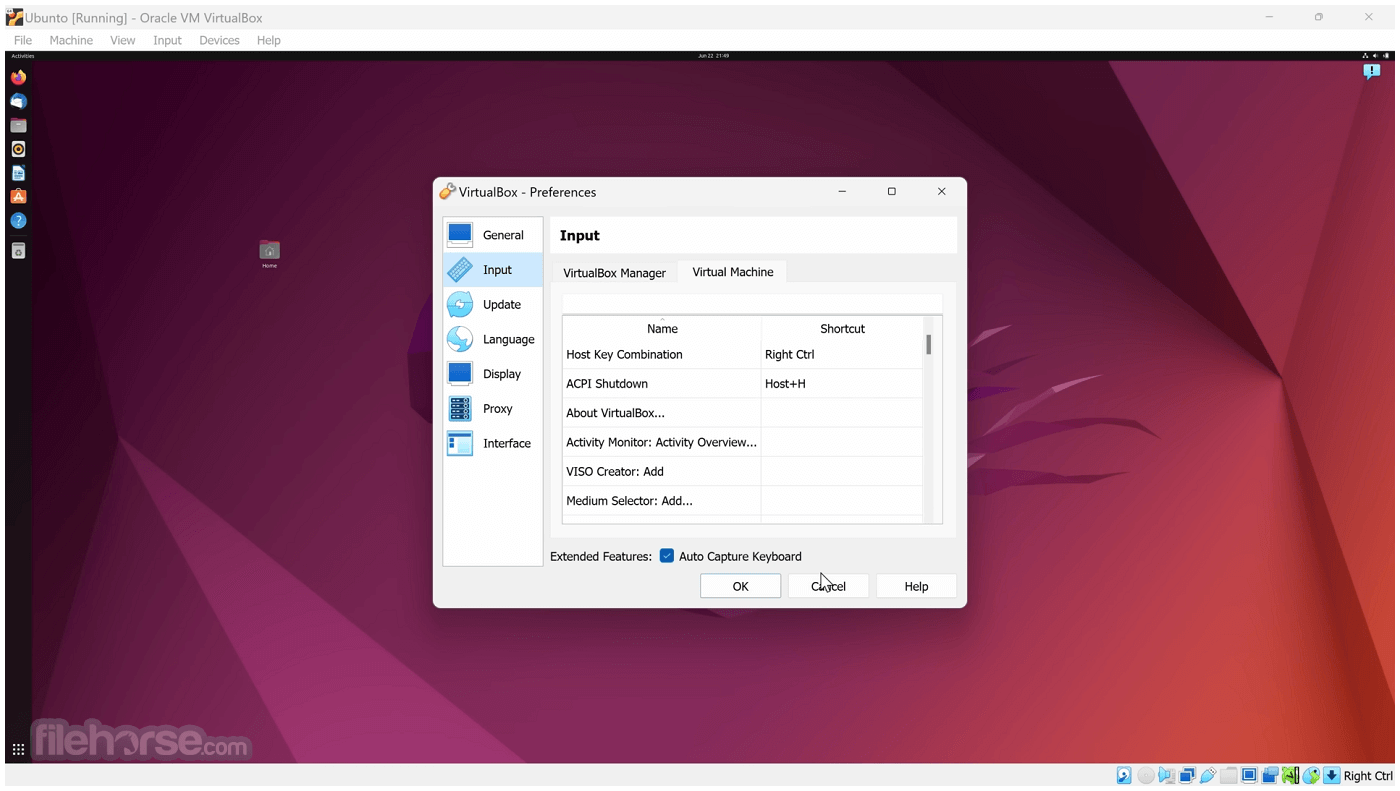-
Latest Version
-
Operating System
Windows XP / XP64 / Vista / Vista64 / Windows 7 / Windows 7 64
-
User Rating
Click to vote -
Author / Product
-
Filename
VirtualBox-4.2.0-80737-Win.exe
-
MD5 Checksum
c8b4666b63ed5d72d7a28207e245272f
Sometimes latest versions of the software can cause issues when installed on older devices or devices running an older version of the operating system.
Software makers usually fix these issues but it can take them some time. What you can do in the meantime is to download and install an older version of VirtualBox 4.2.0 Build 80737.
For those interested in downloading the most recent release of VirtualBox or reading our review, simply click here.
All old versions distributed on our website are completely virus-free and available for download at no cost.
We would love to hear from you
If you have any questions or ideas that you want to share with us - head over to our Contact page and let us know. We value your feedback!
What's new in this version:
The following major new features were added:
- Improved Windows 8 support, in particular many 3D-related fixes
- GUI: VM groups
- GUI: expert mode for wizards
- GUI: allow to alter some settings during runtime
- Support for up to 36 network cards, in combination with an ICH9 chipset configuration
- Resource control: added support for limiting network IO bandwidth; see Section 6.9, “Limiting bandwidth for network I/O”
- Added possibility to start VMs during system boot on Linux, OS X and Solaris; see Section 9.24, “Starting virtual machines during system boot”
- Added experimental support for Drag'n'drop from the host to Linux guests. Support for more guests and for guest-to-host is planned.
- Added support for parallel port passthrough on Windows hosts
- Enhanced API for controlling the guest; please see the SDK reference and API documentation for more information
In addition, the following items were fixed and/or added:
- Mac OS X hosts: sign application and installer to avoid warnings on Mountain Lion
- VMM: fixed a potential host crash triggered by shutting down a VM when another VM was running (only affected 32-bit hosts and 64-bit OS X hosts, 4.1 regression)
- VMM: fixed a potential host crash under a high guest memory pressure (seen with Windows 8 guests)
- VMM: improved VM context switch performance for Intel CPUs using nested paging
- VMM: added support for FlushByASID features of AMD CPUs (Bulldozer and newer)
- VMM: fixed unreal mode handling on older CPUs with VT-x (gPXE, Solaris 7/8/9)
- VMM: fixed MP tables fixes for I/O APIC interrupt routing relevant for ancient SMP guests (e.g. old OS/2 releases)
- VMM: support recent VIA CPUs
- VMM: fixed handling of task gates if VT-x/AMD-V is disabled
- VMM: page fusion fixes
- GUI: network operations manager
- GUI: allow taking screenshots of the current VM window content
- GUI: allow automatically sorting of the VM list
- GUI: allow starting of headless VMs from the GUI
- GUI: allow reset, shutdown and poweroff from the Manager window
- GUI: allow to globally limit the maximum screen resolution for guests
- GUI: show the full medium part on hovering the list of recently used ISO images
- GUI: do not create additional folders when a new machine has a separator character in its name
- GUI: don't crash on terminate if the settings dialog is still open
- GUI: consider scaled DPI values when display fonts on Windows hosts
- GUI: if a bridged network interface cannot be found, don't refuse to start the VM but allow the user to change the setting immediately
- Snapshots: fixed a crash when restoring an old snapshot when powering off a VM
- Clipboard: disable the clipboard by default for new VMs (see Section 13.3.2.3, “Clipboard”). It can be enabled at any time using the VM menu.
- Settings: sanitise the name of VM folders and settings file
- Settings: allow to store the iSCSI initiator secret encrypted
- NAT: improvements for the built-in TFTP server
- NAT: fixed memory leak when disabling the NAT engine
- E1000: 802.1q VLAN support
- Storage: implemented burning of audio CDs in passthrough mode
- Storage: fixed audio CD passthrough for certain media players
- Storage: implemented support for discarding unused image blocks through TRIM for SATA and IDE and UNMAP for SCSI when using VDI images
- Storage: added support for QED images
- Storage: added support for QCOW (full support for v1 and readonly support for v2 images)
- Storage: added readonly support for VHDX images
- USB: don't crash if a USB device is plugged or unplugged when saving or loading the VM state (SMP guests only)
- Solaris additions: added support for X.org Server 1.11 and 1.12
- Solaris additions: switched to using an in-kernel mouse driver
- Windows hosts: no need to recreate host-only adapters after a VirtualBox update
- Windows hosts: updated toolchain; make the source code compatible to VC 2010 and enable some security-related compiler options
- Windows Additions: fixed memory leak in VBoxTray
 OperaOpera 125.0 Build 5729.49 (64-bit)
OperaOpera 125.0 Build 5729.49 (64-bit) MalwarebytesMalwarebytes Premium 5.4.5
MalwarebytesMalwarebytes Premium 5.4.5 PhotoshopAdobe Photoshop CC 2026 27.2 (64-bit)
PhotoshopAdobe Photoshop CC 2026 27.2 (64-bit) BlueStacksBlueStacks 10.42.153.1001
BlueStacksBlueStacks 10.42.153.1001 OKXOKX - Buy Bitcoin or Ethereum
OKXOKX - Buy Bitcoin or Ethereum Premiere ProAdobe Premiere Pro CC 2025 25.6.3
Premiere ProAdobe Premiere Pro CC 2025 25.6.3 PC RepairPC Repair Tool 2025
PC RepairPC Repair Tool 2025 Hero WarsHero Wars - Online Action Game
Hero WarsHero Wars - Online Action Game TradingViewTradingView - Trusted by 60 Million Traders
TradingViewTradingView - Trusted by 60 Million Traders WPS OfficeWPS Office Free 12.2.0.23155
WPS OfficeWPS Office Free 12.2.0.23155










Comments and User Reviews